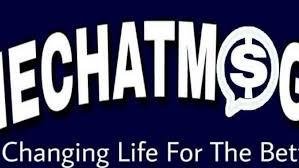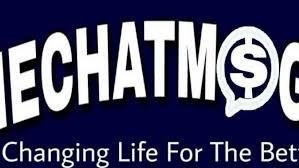The global battery recycling market is witnessing a significant upsurge as nations, industries, and consumers shift toward cleaner energy solutions. As electric vehicles (EVs), renewable energy storage, and portable electronics proliferate, the need for sustainable and responsible battery end-of-life management becomes critical. Recycling technologies are gaining traction, transforming waste into valuable resources and reducing environmental burdens while ensuring a secure supply of critical raw materials such as lithium, cobalt, and nickel.
Market Dynamics
One of the primary market drivers is the exponential growth of the electric vehicle market. Global EV sales crossed 14 million units in 2023, with projections indicating continued double-digit growth through 2030. These vehicles rely on lithium-ion batteries, which, at the end of their lifecycle, present both a challenge and an opportunity for recyclers. Efficient battery recycling not only reduces the environmental impact of disposal but also reintroduces key materials into the manufacturing supply chain, reducing dependence on mining.
Government regulations and sustainability policies are playing a pivotal role in shaping the battery recycling market. The European Union has enacted stringent directives under the European Battery Regulation to ensure minimum recycling efficiency and material recovery standards. Similarly, countries such as the United States, China, and India are introducing mandates for battery take-back, producer responsibility, and safe disposal to mitigate environmental harm and improve resource circularity.
Environmental concerns regarding hazardous materials—like heavy metals and toxic electrolytes—are also pushing companies to invest in advanced recycling technologies. Improper disposal can lead to soil contamination, groundwater pollution, and even fire hazards in landfills, making battery recycling an ecological necessity.
Technological innovation is unlocking new possibilities in the battery recycling industry. Hydrometallurgical and direct recycling methods are being refined to maximize recovery rates, reduce energy consumption, and lower costs. Unlike traditional pyrometallurgical methods, which are energy-intensive and emit greenhouse gases, newer processes allow selective extraction of materials and preserve battery cathode structures, which can be reused directly.
Additionally, the rising cost and limited availability of critical materials have heightened interest in battery recycling as a strategic resource security solution. With geopolitical tensions and trade dependencies affecting mineral supply chains, recycling offers a buffer by reducing reliance on primary mining.
The integration of AI, automation, and robotics into sorting and dismantling processes is also improving efficiency and scalability. Companies are deploying smart systems to identify battery chemistries, track inventory, and safely process spent batteries with minimal human intervention.
Despite these advancements, challenges remain. These include battery collection inefficiencies, lack of standardized battery formats, safety concerns during handling, and underdeveloped infrastructure in some regions. Addressing these barriers will be key to unlocking the market’s full potential.
Competitive Landscape
The battery recycling market features a mix of established recycling firms, battery manufacturers, automotive OEMs, and technology startups. This convergence has created a highly dynamic competitive landscape, with companies adopting collaborative and innovation-driven strategies.
Li-Cycle, based in North America, is at the forefront of lithium-ion battery recycling using hydrometallurgical processes. The company has secured partnerships with General Motors and LG Energy Solution to recycle production scrap and post-consumer batteries.
Redwood Materials, founded by a former Tesla executive, has quickly become a major player in the U.S. market. The company focuses on recovering lithium, cobalt, and nickel from end-of-life batteries and manufacturing scrap, reintegrating these materials into the battery supply chain.
Umicore, a Belgium-based firm, is one of the world’s most advanced recyclers of lithium-ion and nickel metal hydride batteries. Its industrial-scale facilities in Europe offer high material recovery efficiency and compliance with strict environmental standards.
Retriev Technologies, a key North American player, operates one of the largest fully permitted battery recycling networks, handling a broad range of battery chemistries, including lithium-ion, lead-acid, and nickel-cadmium.
GEM Co., Ltd., based in China, plays a significant role in the Asian market, processing tens of thousands of tons of spent batteries annually and supplying recovered materials back to battery makers.
Battery manufacturers and EV producers are also integrating recycling into their business models. Companies like Tesla, CATL, and BYD have launched in-house recycling programs or entered joint ventures to manage their battery lifecycle and reduce material sourcing risks.
Startups and emerging players, especially in Europe and India, are contributing to the sector with localized collection networks, proprietary recycling methods, and B2B recycling services. Investment in R&D, facility expansion, and international partnerships is intensifying competition and innovation.
Mergers and acquisitions are further reshaping the landscape, allowing established players to scale operations and enter new markets. Cross-sector collaborations among recyclers, automakers, and raw material suppliers are becoming common to build closed-loop battery ecosystems.
Regional Insights
North America is a rapidly growing market, supported by regulatory frameworks such as the Inflation Reduction Act in the U.S., which offers incentives for sustainable battery production and recycling. The region benefits from rising EV adoption, robust manufacturing bases, and technological innovation.
Europe is leading the global charge in policy-driven growth, with aggressive targets for battery recycling efficiency, second-life use, and material recovery. Countries like Germany, Norway, and the Netherlands are spearheading pilot projects and industrial-scale recycling facilities.
Asia-Pacific, especially China, holds the largest share of the global battery recycling market, driven by massive EV production and government mandates. Japan and South Korea are also investing in advanced recycling infrastructure to reduce import dependency on raw materials.
India is emerging as a promising market, with EV adoption on the rise and government-backed initiatives encouraging domestic recycling capacities. The Ministry of Environment has proposed Extended Producer Responsibility (EPR) rules to enhance battery traceability and management.
Latin America and the Middle East are still developing their recycling ecosystems but present opportunities for future growth as battery usage scales in renewable energy and mobility sectors.
Future Outlook
With the global push toward electrification, clean energy, and sustainable waste management, the battery recycling market is poised for long-term growth. Policy mandates, rising material costs, and technological innovation are aligning to make recycling not only an environmental imperative but also an economic opportunity.
Companies that invest early in efficient, scalable, and environmentally friendly recycling processes will gain a competitive advantage in securing critical materials and supporting a circular economy. The battery recycling market will continue to expand as it becomes a cornerstone of global energy transition strategies and battery lifecycle management.
More Trending Reports:
Real Time Flare Monitoring Systems


